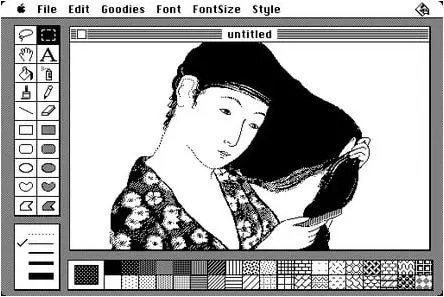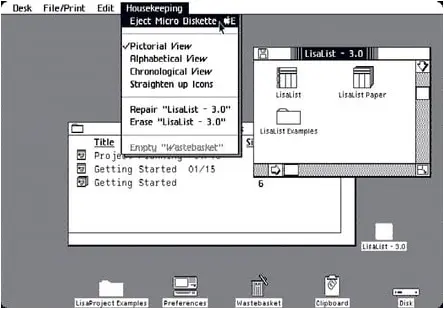Rip: Bill Atkinson, Co Creator Of Apple Lisa And Mac
Obit Bill Atkinson, widely acclaimed as perhaps the most brilliant computer programmer ever, has succumbed to pancreatic cancer at 74.
Atkinson’s family announced the news on Facebook on Sunday.
William Dana Atkinson was one of the core people on the teams that created the Lisa and then Macintosh computers at Apple in the late 1970s and early 1980s. He was one of the most important and influential computer programmers who has ever lived. It is no exaggeration to say that all computer UIs designed in the last 40 years were shaped and influenced by Atkinson’s brilliance and originality.
He dropped out of a doctorate in neuroscience to join Apple in 1978. He became employee # 51. In 2018, he said:
Some say Steve used me, but I say he harnessed and motivated me, and drew out my best creative energy. It was exciting working at Apple, knowing that whatever we invented would be used by millions of people.
Since the weekend when the news first broke, a remarkable range of tributes to the man and his work have appeared. For the Reg FOSS desk, one of the things that has particularly struck us is the range of different aspects of Atkinson’s creativity that resonated with different people.
For instance, those working mainly online, such as TechCrunch’s Antony Ha, call out HyperCard. Atkinson designed and wrote HyperCard, which introduced the wider world to the concept of hyperlinks as invented by Ted Nelson for his Xanadu hypertext system. Hypercard made it easy to create “stacks” of documents and navigate through them by clicking on links. As The Register has described more than once, it’s inspired JavaScript recreations and parts of the Windows 10 UI, but most significantly of all it inspired the creators of the World Wide Web. It is specifically mentioned in the original proposal. Atkinson himself described the inspiration for Hypercard as a 1985 LSD trip.
Anyone who creates or edits pictures on computers uses tools that follow in the footsteps of an earlier Bill Atkinson app: he wrote MacPaint. Between it and his earlier version, LisaSketch, this introduced ideas like tool palettes, which became toolbars; the lasso tool to select objects; zoomed-in pixel editing, which Atkinson called FatBits; and the paint-bucket fill tool, among many other things.
Programmers who know his work nod with respect to lower-level stuff. The story of Apple’s visit to Xerox, where the Xerox Alto graphical workstation inspired the Apple Lisa’s overlapping windows, is well known. What’s less well understood is that Smalltalk could only write or draw into one window, the topmost. It was impossible to update the contents of background windows. Atkinson was on that visit, but he didn’t know that. He just assumed the Smalltalk team must have solved that, and all he had to do was work out how. He called his resulting algorithm regions and after a serious 1982 car accident and head injuries, Atkinson’s first words to his visiting boss were “Don’t worry, Steve, I still remember how to do regions.”
Atkinson wrote the low-level graphical routines that became LisaDraw and later, optimized even further, the Macintosh’s QuickDraw. In the process, Atkinson gradually invented many of the tools that comprise and define the modern GUI: menu bars, window title bars, rearranging windows with drag and drop, and more. He documented his incremental creative process with dozens of Polaroid photos. In comparison, the GUI of Smalltalk-76 or Xerox’s commercial Star workstations is strange and unfamiliar, as the Darkstar emulator’s screenshots show.
Lower-level still, he is remembered for his remarkably efficient dithering algorithm, which you can try here.
As “Apple acolyte” Steven Levy wrote in Rolling Stone, Atkinson also brought Burrell Smith, designer of the original Macintosh hardware, to the project. In his book Insanely Great, Levy described the coming up with regions:
Atkinson worked at the problem for months – not only in long hours at a desk, but literally in his dreams. Upon arising he would record his somnambulant labors in a notebook. Eventually wave after wave of Atkinson’s brainpower eroded the problem. He had set our to reinvent the wheel; actually he wound up inventing it.
Unlike this vulture, Levy knew Atkinson personally, and we found his Wired obituary touching.
The New York Times obituary has some quotes that convey how people who knew his work saw it. Apple colleague Steve Perlman said *”Looking at his code was like looking at the ceiling of the Sistine Chapel. His code was remarkable. It is what made the Macintosh possible.”
Atkinson persuaded Apple to spin off its radical Paradigm project as a separate company, and left Apple in 1990 to co-found General Magic. It developed the Magic Cap – essentially something like a smartphone, but a decade too early. Its website is still online and you can run the software in emulation today.
In 2007 he came out of semi-retirement to work with Palm Pilot inventor Jeff Hawkins’s AI startup Numenta, saying “What Numenta is doing is more fundamentally important to society than the personal computer and the rise of the Internet.”
Later in his life, he became an accomplished nature photographer. In 2004, he published a book of extreme close-up mineral photographs called Within the Stone. In 2009, he wrote an app to electronically send postcards: it’s called PhotoCard. You can download pictures from the book and his other photography on BillAtkinson.com.
A year and a half ago, the Computer History Museum hosted a panel discussion titled Insanely Great for the Mac’s 40th birthday. Its two hours contain many spirited contributions from Atkinson.
He announced his illness on Facebook in late 2024, saying:
On October first, I was diagnosed with pancreatic cancer. Because of vascular involvement, surgery is not possible.
He married Jingwen Cai in January 2023. As his family said, “He is survived by his wife, two daughters, stepson, stepdaughter, two brothers, four sisters, and dog, Poppy.”
This vulture learned of Atkinson’s passing from a post on Daring Fireball. We cannot better John Gruber’s closing words:
I say this with no hyperbole: Bill Atkinson may well have been the best computer programmer who ever lived. Without question, he’s on the short list. What a man, what a mind, what gifts to the world he left us.
A considerable amount of time and effort goes into maintaining this website, creating backend automation and creating new features and content for you to make actionable intelligence decisions. Everyone that supports the site helps enable new functionality.
If you like the site, please support us on “Patreon” or “Buy Me A Coffee” using the buttons below
To keep up to date follow us on the below channels.




![Cobalt Strike Beacon Detected - 140[.]143[.]132[.]170:80 4 Cobalt-Strike](https://www.redpacketsecurity.com/wp-content/uploads/2021/11/Cobalt-Strike-300x201.jpg)
